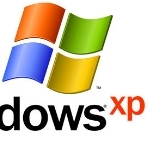By Bill Pytlovany
So I Have Windows 8, Now What?
While everyone has been focusing their attention on smart phones and tablets, there are people still buying new computers and in the process getting Windows 8. I have received many questions asking what makes Windows 8 better and some wanting to know if they can go back to Windows 7.
Let’s first address the question about installing Windows 7. Unless the agreement included in your purchase specifically provided the ability to install Windows 7 you’ll need to purchase a new Windows license. That means you can’t get an upgrade version, you’ll need a complete version of Windows 7. Since you’re doing a full install it’s also reasonable to obtain a less expensive “OEM” or “System Builder” version of Windows 7. Unfortunately as noted by award-winning author Ed Bott, there is some debate if this version provides a valid license for an individual.
You’ll want to check with your computer maker before downgrading to make sure a traditional BIOS is supported. If your new computer is Windows 8 Logo approved hardware it won’t have the familiar BIOS that is accessible before you boot into Windows. New Windows 8 hardware has something called “Unified Extensible Firmware Interface”. UEFI provides enhanced security called “Early Launch Anti-Malware” preventing malware from taking over your computer immediately as it boots. If you visit some Linux forums you’ll hear many complaints about these changes that prevent the installation of Linux. UEFI has many advantages including fast boot times and remote repairs but since it replaces your BIOS it will need to be disabled.
My general recommendation is Don’t Panic. The new “modern” tile interface in Windows 8 isn’t something to fear. While it may not be intuitive and lacks documentation just knowing some basic tricks can help you work around it. If you do downgrade make sure you keep everything you may need to restore Windows 8 including your Microsoft Windows product key.
This post is excerpted with Bill’s permission from his blog




